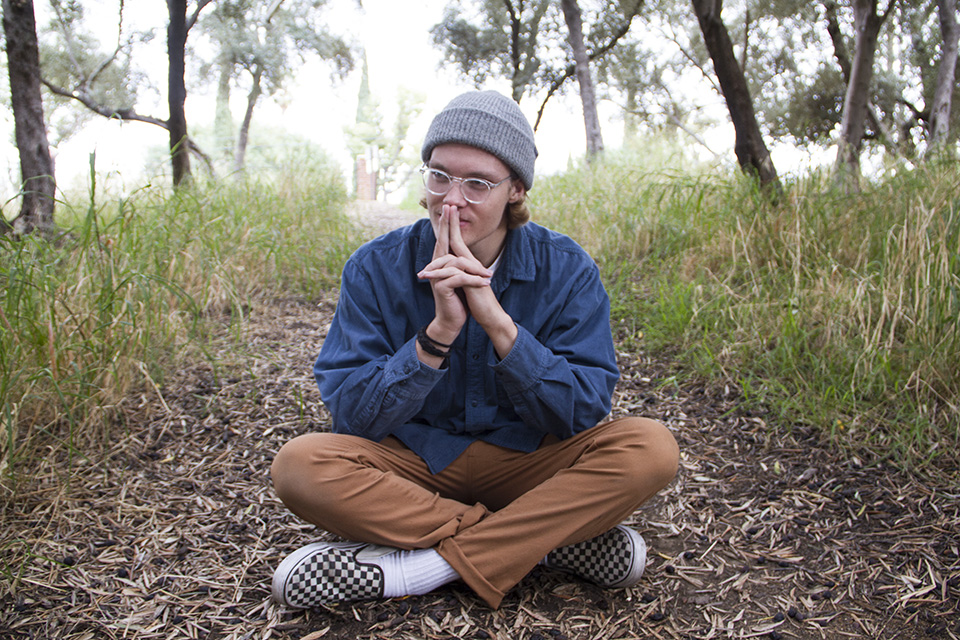Art takes different subjective forms. For some, it presents itself as soft poetry, and for others, as a film that has a way of seeping into the bottom of one’s core. Junior art major Ludo Krabbendam produces art that manifests itself most prominently as conversations. This closely-intertwined relationship with art began at a very young age, while he lived in La Serena, Chile.
Early Artistry
Upon his family’s return to the States, he continued his practices, and it slowly became more of a special expression as opposed to a simple pastime.
“I think I started taking art really seriously in middle school, like fourth or fifth grade. Just recognizing that I was doing better than those around me, noticing that something was different, and then receiving a lot of affirmation from my teachers,” Krabbendam said.
He grew into a more specific style in high school where he found an affinity for painting landscapes, and then subsequently began to find himself influenced by the Renaissance era and iconography.
“I wanted to be the next great master of something, I just hadn’t found out what yet exactly,” Krabbendam said.
Fresh Perspective
Shortly after his arrival at Biola, he landed upon a new niche—illustrations via a trusty dip pen. This stylistic form takes both ample time and incredible patience, as he found the pen only able to draw for approximately 12 seconds before having to dip again.
“I landed on this particular visual style for a few different reasons. The style is very specific and there aren’t a lot of people who are doing it. It is definitely a smaller group especially within the contemporary art world,” Krabbendam said.
He enjoyed finding a more unique area of art to further build his abilities. He began to mix his past influence from the Renaissance era into this new relevant method.
“If you hold my work up to a Da Vinci, there’s not a lot of visual correlations, but a lot of the behind the scenes conceptual process is the same thing,” Krabbendam said.
Krabbendam felt that the hand-drawn type of artistry became a lost art as people have become much lazier and have run out of time for it. People have acquired a perception of art where they just want to look at something that sparks instant feeling, but his style forces one to engage with it.
“My goal started out as a way to reach people who don’t otherwise talk about God or faith or Christianity. I wanted to give them something that they can visually appreciate and then in turn ask difficult questions to better understand what I meant,” Krabbendam said.
He recognizes that a lot of his symbolism appears pretty dark. In one of his pieces titled “Kill Your Gods,” he works with the theme of idolatry.
“This photo has a crucifix shaped person with two skeletons bowing in worship. The figure is a pseudo Christ figure, and two dead entities are worshipping it. If what you’re worshipping is something other than God, then you are not only destroying yourself but you are also dead to the world,” Krabbendam said.

Victoria Silva/THE CHIMES
a new kind of vital dialogue
His hope is to find a place within the art world for a new kind of vital dialogue. He wants to comment on his own walk with Christ, what he has learned and what he has suffered. Because Krabbendam grew up in a conservative home, he realized his approach to art should not be as conservative or conventional if he wanted to reach the unbelievers of this world.
“I want to speak towards the people that would be drawn to the dark odious stuff and bring them some hope. They could be attracted to this for the style, but there can be hope and positivity gained from this,” Krabbendam said.
He knows the importance of avoiding the label of a Christian artist not because he does not want to be deemed as one, but because he knows that his best shot at spreading the gospel will be to fly under the radar until he can personally articulate the stories behind his work.
“I don’t want people to look at me, think Christian, and that be the end of the conversations. That’s just not going to be helpful for anyone. Providing this alternative is way more life giving,” Krabbendam said.

Victoria Silva/THE CHIMES







